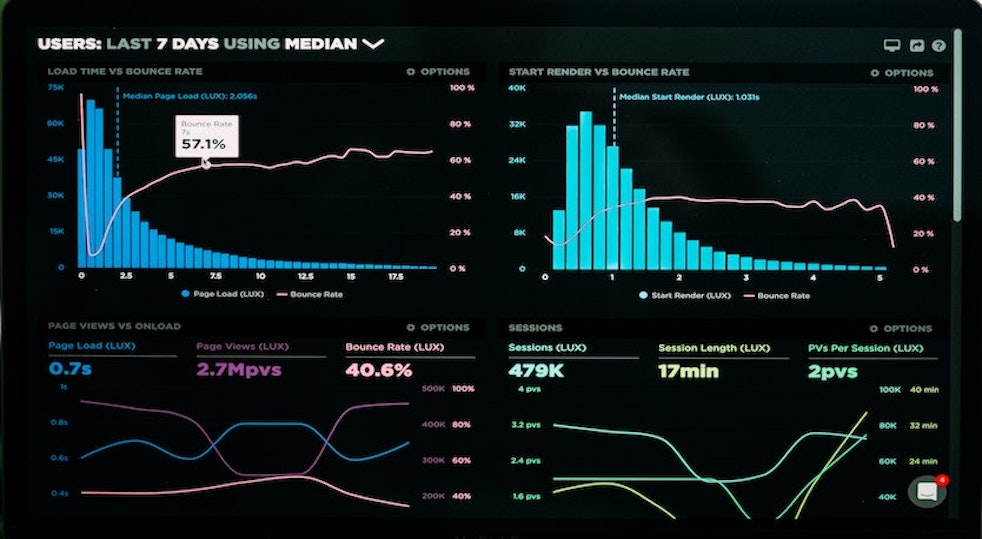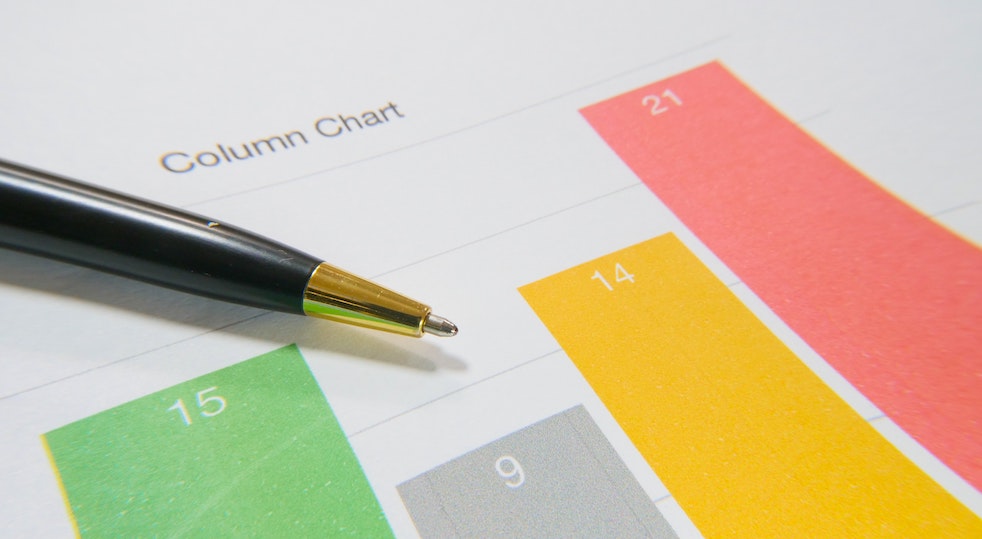To complement our series of QuickReads covering measurement, we will now explore the various data…
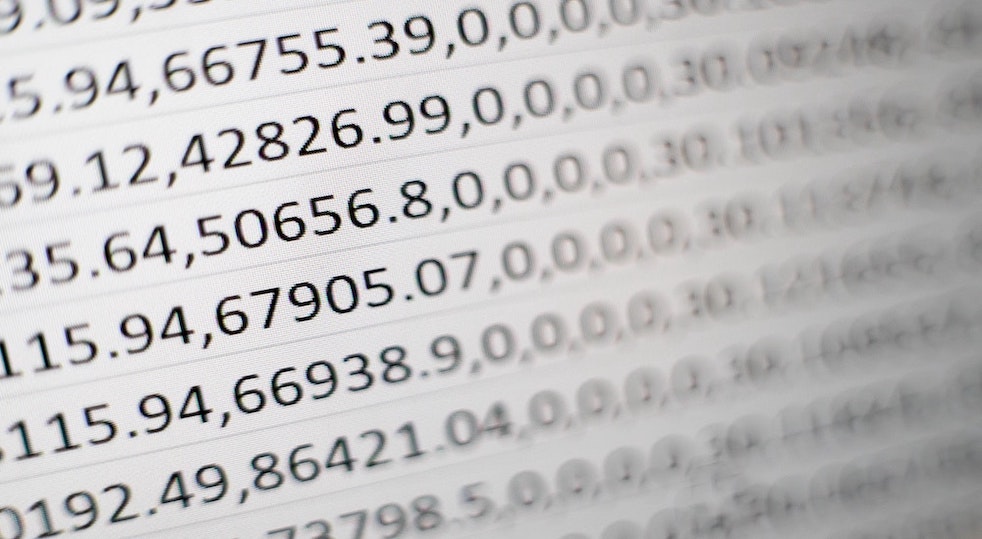
ChangeWise Quick Read: Measurement Series: The Data Collection Plan
As we continue with our series of helpful articles on measurement, we take a quick look at Data Collection Plans, including why you should use one and what they might contain. As always, it wouldn’t be possible to talk about data without mentioning W. Edwards Deming, so we’ll be sure to throw a few of his famous quotes in as we go!
🏆 Top Tip! Before reading further, you might like to take a look at the following ChangeWise QuickReads:
Data; why do I need it?
The Issue with Measurement
Sourcing Customer Voice (where to collect what you need)
Measurement Categories
This Data Collection Plan sounds like a lot of effort…..I’m not sure it’s a good use of my time….
Let me pollute your argument with the facts! (Sorry, that was another fabulous quote from Deming and not us at all!).
In short, a well-structured and thought-out Data Collection Plan will provide you with a consistent approach for identifying, documenting and communicating your data collection needs. This in turn will also provide a method for continuing data collection to enable continuous improvement.
It’s really the only way to ensure the data collected is value-add and useful – so it will save you time in the long run.
Ok I get it! Can we look at data collection plans now please?
Of course…..just make sure you have a good understanding of what needs to be measured first (see our QuickRead ‘Measurement Categories’ if you need help with this). Once you have defined these categories (typically Financial, Quality, Time, Value and Safety & Morale), you can start to develop operational definitions and create your strategy for measuring them.
There are various templates available, but we like the simple one below. Let’s talk about it in more detail.
The Data Collection Plan
A well-planned Data Collection Plan will have two sections, What to Measure and Operational Definitions & How to Measure. Let’s use a GP booking service as an example to help:
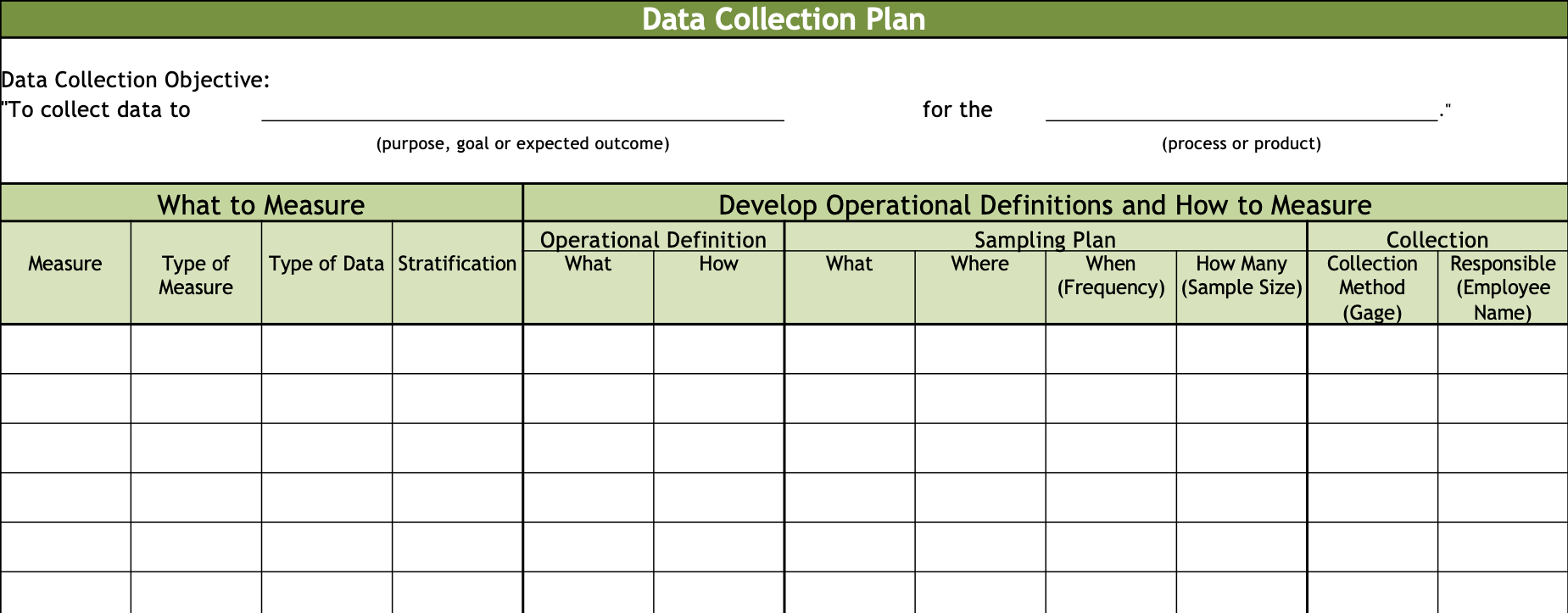
What to Measure
As we mentioned previously, once you have an understanding of what it is you need to measure, you can start to break these measures down into specific metrics.
Let’s use our example of the GP booking service to complete the first 4 columns for ‘What to Measure’:
Measure:
This section contains a breakdown of the specific processes we want to measure.
For our GP example, measuring the process from call pick-up to booking does not capture the true ‘consumption’ element involved in using our service. Therefore, we need to capture the pre-call wait time and any follow-up calls made by the patient to rebook (should our initial appointment offering be unacceptable to the patient).
Type of Measure:
What form of metric are you capturing? Minutes, seconds, height, length etc
Type of Data:
Data types fall into 2 categories, Discreet and Continuous
Discreet data involves concrete numbers with specific, fixed values (so you can typically count it, provide a pass/fail or accept/reject).
Continuous data is typically measured over an interval of time and will have varying data (duration, distance, height etc).
Stratification:
This is where you add details regarding how will you stratify the data; time of day, every 2 hours, on the 1stWednesday of each month, every 10th item produced etc.
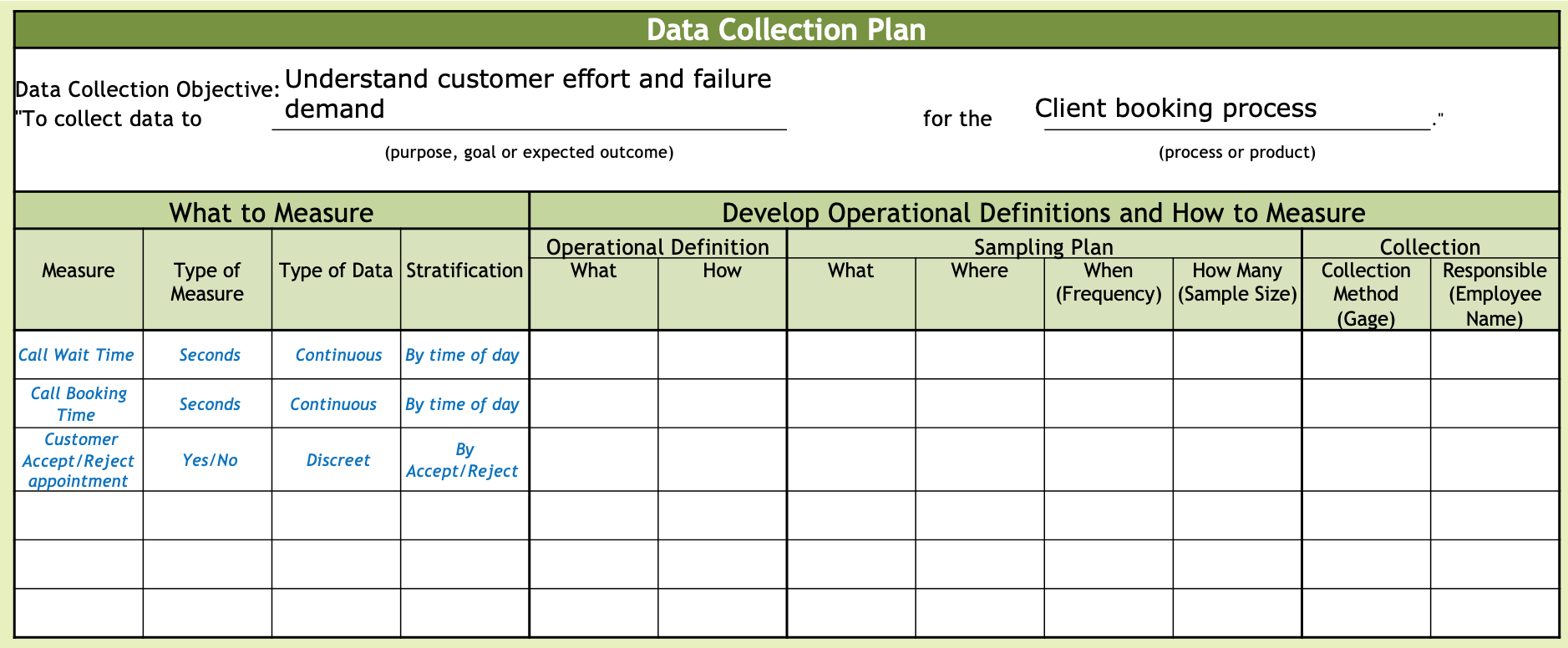
Operational Definitions
This explicitly states what and how you will collect the data required:
What:
What specific information are you measuring in the process?
How:
How will you ensure you are able to capture accurate data? In our example, we only have an automated capture of call wait time, it will be necessary to create a Call Log Sheet for the booking process once the call is answered in house.
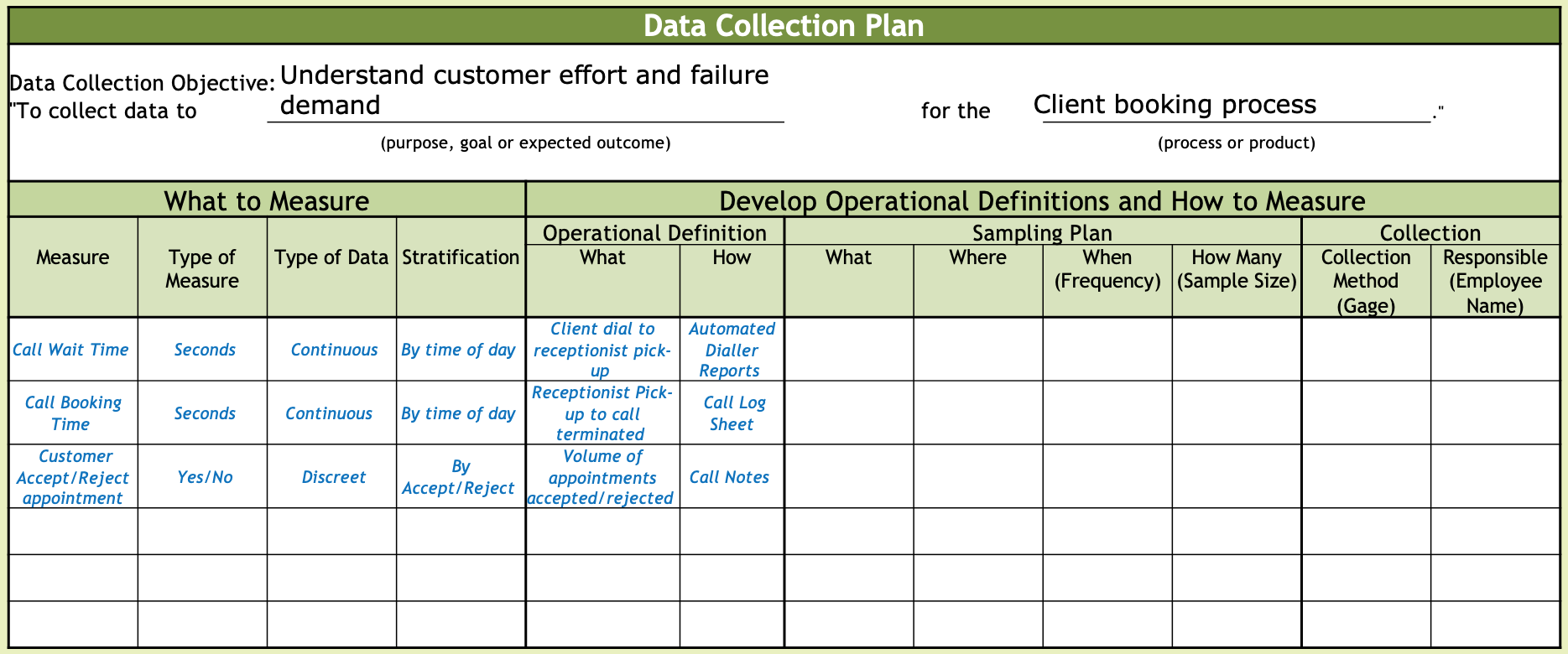
Sampling Plan
It is often not viable or of value to collect and analyse all data produced. It is likely you will need to consider how you can monitor a batch or segment of the data whilst ensuring your conclusions are remain representative of the whole (QuickRead to follow on this topic!). Think about and include:
What?
What are you measuring? In our example, we are collecting data on patients calling to book a GP appointment (not those calling to obtain test results, blood forms etc)
Where?
Where will you collect the data? Is your data location sensitive? In our example, we only have one booking team based at the same location. However, if you were looking at multiple call centres you need to make sure your data collection represents the holistic view of what is happening.
When?
What is the frequency of data collection? Hourly, daily, monthly? How will you make sure all customer experiences are captured?
How Many?
What sample size will you use? If you have 25 people calling every hour, how many samples will you record?
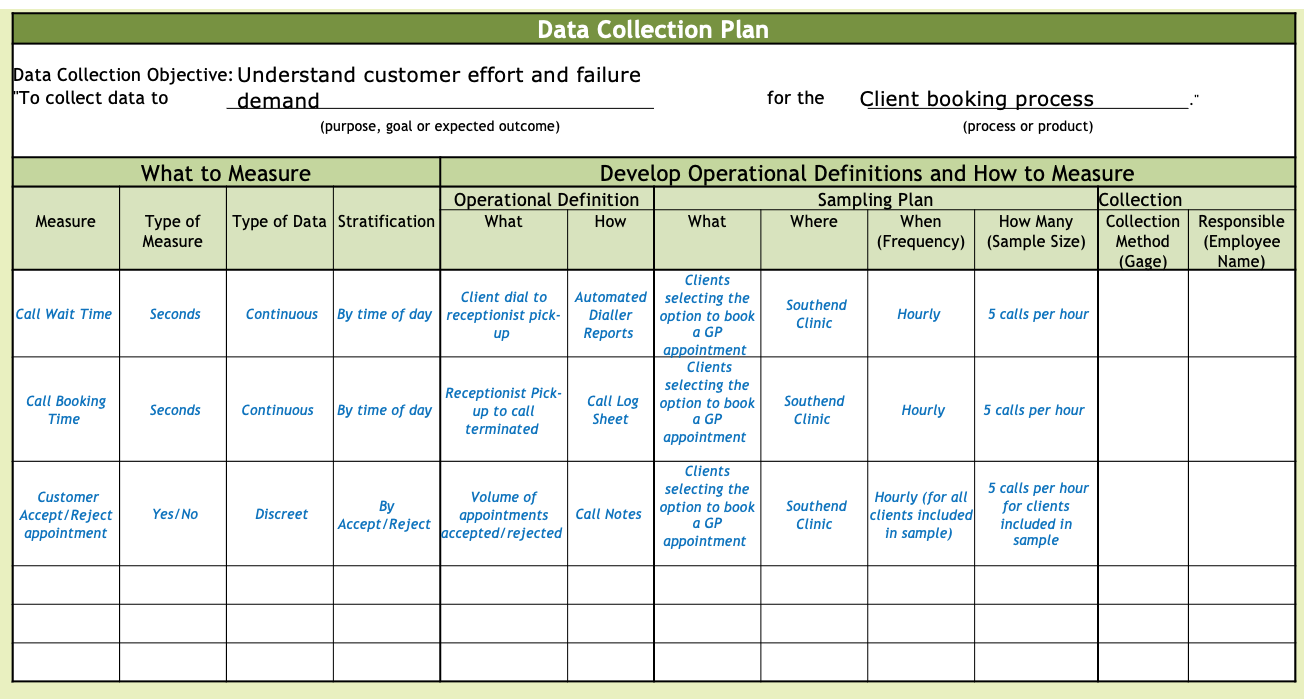
Collection
How will you physically and practically collect the data? Which employees and teams need to be involved?
Collection Method:
The data we need may not be readily available, so we may have to create a way to record what we need. In our example, the call waiting times are automatically recorded in a telephony application. However, we don’t have any way of recording the booking transaction time once the receptionist answers the call. Therefore, we may need to record the time manually on a spread sheet.
Responsible:
Who will be responsible for collecting the data? Employees will need to understand the aims of the lean improvement, why we are collecting the data, and what is expected of them.
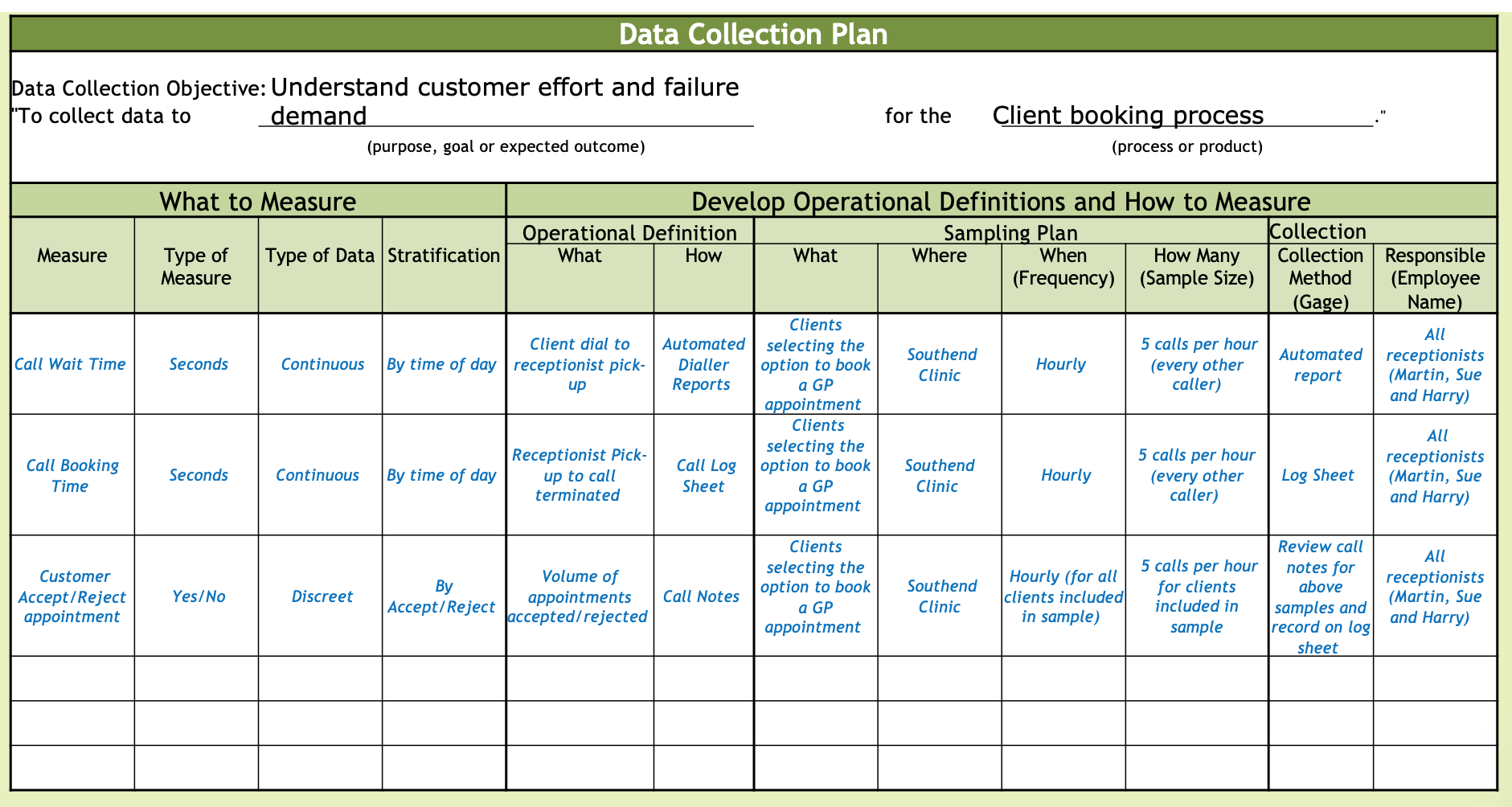
🏆 Top Tip! As always, data collection plans are best agreed as a team, including subject matter experts who handle the process on a regular basis. This way, you can be aware of any simpler or pre-existing data sources you could use.
In Summary
A well-structured and thought-out Data Collection Plan will save you time later in the process and provide you with a consistent approach for identifying, documenting and communicating your data collection needs. It’s really the only way to ensure the data you collect is value-add and useful.
Have we got you interested? Get in touch with the ChangeWise team at info@changewise.co.uk and let’s talk about how we can help you improve your business processes.
ChangeWise believes employee engagement is the foundation for successful Change. Training and coaching your people to use simple continuous improvement techniques will enable your organisation to continuously adapt and stay ahead in a constantly changing and challenging environment.
For updates and interesting Lean Change insights, connect with us on LinkedIn.

